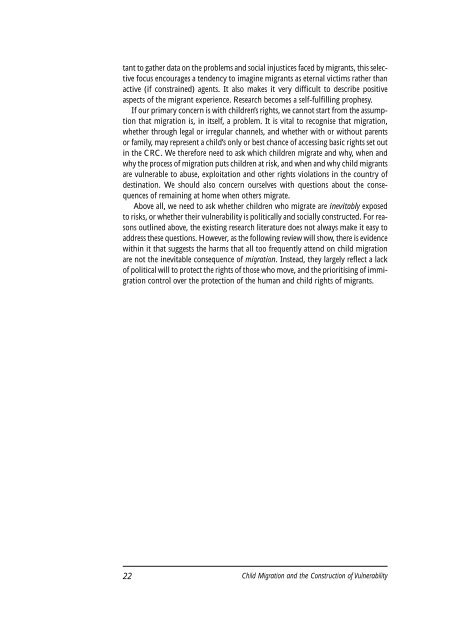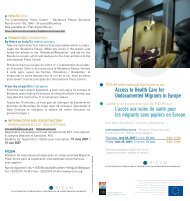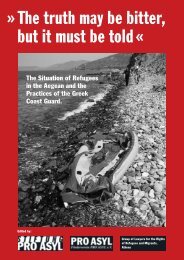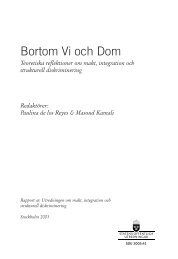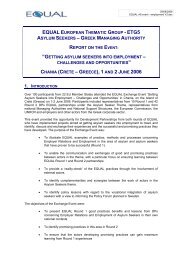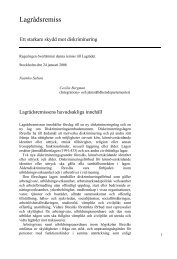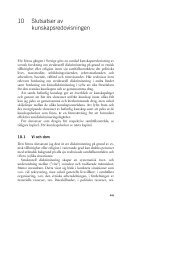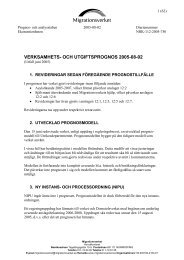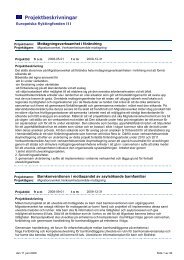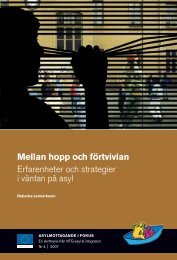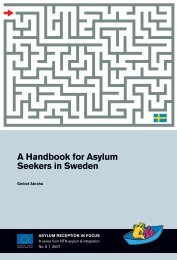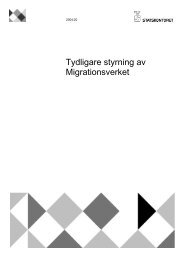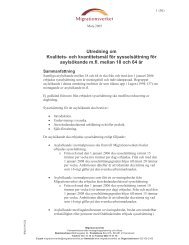and the Construction of Vulnerability - Child Trafficking
and the Construction of Vulnerability - Child Trafficking
and the Construction of Vulnerability - Child Trafficking
You also want an ePaper? Increase the reach of your titles
YUMPU automatically turns print PDFs into web optimized ePapers that Google loves.
tant to ga<strong>the</strong>r data on <strong>the</strong> problems <strong>and</strong> social injustices faced by migrants, this selective<br />
focus encourages a tendency to imagine migrants as eternal victims ra<strong>the</strong>r than<br />
active (if constrained) agents. It also makes it very difficult to describe positive<br />
aspects <strong>of</strong> <strong>the</strong> migrant experience. Research becomes a self-fulfilling prophesy.<br />
If our primary concern is with children’s rights, we cannot start from <strong>the</strong> assumption<br />
that migration is, in itself, a problem. It is vital to recognise that migration,<br />
whe<strong>the</strong>r through legal or irregular channels, <strong>and</strong> whe<strong>the</strong>r with or without parents<br />
or family, may represent a child’s only or best chance <strong>of</strong> accessing basic rights set out<br />
in <strong>the</strong> CRC. We <strong>the</strong>refore need to ask which children migrate <strong>and</strong> why, when <strong>and</strong><br />
why <strong>the</strong> process <strong>of</strong> migration puts children at risk, <strong>and</strong> when <strong>and</strong> why child migrants<br />
are vulnerable to abuse, exploitation <strong>and</strong> o<strong>the</strong>r rights violations in <strong>the</strong> country <strong>of</strong><br />
destination. We should also concern ourselves with questions about <strong>the</strong> consequences<br />
<strong>of</strong> remaining at home when o<strong>the</strong>rs migrate.<br />
Above all, we need to ask whe<strong>the</strong>r children who migrate are inevitably exposed<br />
to risks, or whe<strong>the</strong>r <strong>the</strong>ir vulnerability is politically <strong>and</strong> socially constructed. For reasons<br />
outlined above, <strong>the</strong> existing research literature does not always make it easy to<br />
address <strong>the</strong>se questions. However, as <strong>the</strong> following review will show, <strong>the</strong>re is evidence<br />
within it that suggests <strong>the</strong> harms that all too frequently attend on child migration<br />
are not <strong>the</strong> inevitable consequence <strong>of</strong> migration. Instead, <strong>the</strong>y largely reflect a lack<br />
<strong>of</strong> political will to protect <strong>the</strong> rights <strong>of</strong> those who move, <strong>and</strong> <strong>the</strong> prioritising <strong>of</strong> immigration<br />
control over <strong>the</strong> protection <strong>of</strong> <strong>the</strong> human <strong>and</strong> child rights <strong>of</strong> migrants.<br />
22<br />
<strong>Child</strong> Migration <strong>and</strong> <strong>the</strong> <strong>Construction</strong> <strong>of</strong> <strong>Vulnerability</strong>


